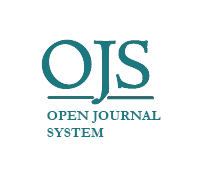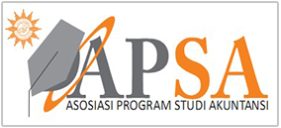Cash Conversion Cycle, Asset Turnover, Capital Expenditure and Firm Value: The Mediating Role of Profitability
DOI:
https://doi.org/10.22219/jrak.v13i3.25161Keywords:
Asset turnover, Cash conversion cycle, Capital expenditure, Firm value, Profitability, mediationAbstract
Purpose: To examine the impact of the cash conversion cycle, asset turnover, and capital expenditure on firm value, using profitability as the mediating factor.
Methodology/approach: Using a sample consisting of 61 non-cyclical consumer goods listed firms in Indonesia from 2016 to 2021, a structural equation modeling is employed to analyze the direct, indirect, and total effects of the vari-ables being studied on firm value.
Findings: The cash conversion cycle does not have signi-ficant direct or total effects on firm value, but it has a negative and significant indirect effect on firm value through profitability. Asset turnover and capital expen-ditures directly significantly affect firm value in different directions, but they both have positive and significant total effects on firm value. Profitability fully mediates the effect of the cash conversion cycle on firm value, and partially mediates the effect of capital expenditures on firm value.
Practical implications: To ensure value creation, firms are suggested to monitor the cash conversion cycle, enhance asset turnover, and ensure the profitability of capital expenditures.
Originality/value: Providing empirical evidence on the mediating role of profitability in analyzing the effect of the cash conversion cycle, asset turnover, and capital expenditures on firm value.
Downloads
References
Aktas, N., Croci, E., & Petmezas, D. (2015). Is Working Capital Management Value-Enhancing? Evidence From Firm Performance and Investments. Journal of Corporate Finance, 30, 98–113. https://doi.org/https://doi.org/10.1016/j.jcorpfin. 2014.12.008
Alarussi, A. S., & Alhaderi, S. M. (2018). Factors Affecting Profitability in Malaysia. Journal of Economic Studies, 45(3), 442–458. https://doi.org/10.1108/JES-05-2017-0124
Baños-Caballero, S., García-Teruel, P. J., & Martínez-Solano, P. (2014). Working Capital Management, Corporate Performance, and Financial Constraints. Journal of Business Research, 67(3), 332–338. https://doi.org/https://doi.org/10.1016/j.jbusres. 2013.01.016
Baños-Caballero, S., García-Teruel, P. J., & Martínez-Solano, P. (2019). Net Operating Working Capital and Firm Value: A Cross-Country Analysis. BRQ Business Research Quarterly. https://doi.org/https://doi.org/10.1016/j.brq.2019.03.003
Boisjoly, R. P., Conine, T. E., & McDonald, M. B. (2020). Working Capital Management: Financial and Valuation Impacts. Journal of Business Research, 108, 1–8. https://doi.org/https://doi.org/10.1016/j.jbusres.2019.09.025
Brigham, E., & Ehrhardt, M. (2019). Financial Management - Theory and Practice. Cengage Learning (16th ed.). Cengage Learning, Inc.
Chang, C.-C. (2018). Cash Conversion Cycle and Corporate Performance: Global Evidence. International Review of Economics & Finance, 56, 568–581. https://doi.org/https://doi.org/10.1016/j.iref.2017.12.014
Chung, K. H., & Pruitt, S. W. (1994). A Simple Approximation of Tobin’s Q. Financial Management, 23(3), 70–74. https://doi.org/10.2307/3665623
D’Agostino, R. B., & Belanger, A. (1990). A Suggestion for Using Powerful and Informative Tests of Normality. The American Statistician, 44(4), 316–321. https://doi.org/10.2307/2684359
Damayanti & Sitohang. (2019). Pengaruh Current Ratio, Inventory Turnover, dan Total Asset Turnover terhadap Return on Asset. Jurnal Ilmu Dan Riset Manajemen, 08(06).
Del Brio, E., De Miguel, A., & Pindado, J. (2003). Investment and Firm Value: An Analysis Using Panel Data. Applied Financial Economics, 13(12), 913–923. https://doi.org/10.1080/0960310032000082079
Dhole, S., Mishra, S., & Pal, A. M. (2019). Efficient Working Capital Management, Financial Constraints and Firm Value: A Text-Based Analysis. Pacific-Basin Finance Journal, 58, 101212. https://doi.org/https://doi.org/10.1016/j.pacfin.2019. 101212
El-Ansary, O., & Al-Gazzar, H. (2021). Working Capital and Financial Performance in MENA Region. Journal of Humanities and Applied Social Sciences, 3(4), 257–280. https://doi.org/10.1108/JHASS-02-2020-0036
Enqvist, J., Graham, M., & Nikkinen, J. (2014). The Impact of Working Capital Management on Firm Profitability in Different Business Cycles: Evidence from Finland. Research in International Business and Finance, 32, 36–49. https:// doi.org/https://doi.org/10.1016/j.ribaf.2014.03.005
Faccio, M., & Xu, J. (2018). Taxes, Capital Structure Choices, and Equity Value. Journal of Financial and Quantitative Analysis, 53(3), 967–995. https://doi.org/DOI: 10.1017/S0022109018000042
Fosu, S., Danso, A., Ahmad, W., & Coffie, W. (2016). Information Asymmetry, Leverage and Firm Value: Do Crisis And Growth Matter? International Review of Financial Analysis, 46, 140–150. https://doi.org/10.1016/J.IRFA.2016.05.002
Gordon, M. J. (1959). Dividends, Earnings, and Stock Prices. The Review of Economics and Statistics, 41(2), 99–105. https://doi.org/10.2307/1927792
Greene, W. H. (2018). Econometric Analysis (8th ed.). Pearson Education, Inc.
Gujarati, D. N., & Porter, D. C. (2009). Basic Econometrics (5th ed.). McGraw Hill.
Hayes, A. F. (2022). Introduction to Mediation, Moderation, and Conditional Process Analysis: A Regession Approach. (3rd ed.). The Guilford Press.
Kim, S., & Lee, B. byunghwan. (2018). The Value Relevance of Capital Expenditures and The Business Cycle. Studies in Economics and Finance, 35(3), 386–406. https://doi.org/10.1108/SEF-03-2017-0063
Le, B. (2019). Working Capital Management and Firm’s Valuation, Profitability and Risk. International Journal of Managerial Finance, 15(2), 191–204. https://doi.org/ 10.1108/IJMF-01-2018-0012
Lin, Q., & Lin, X. (2021). Cash Conversion Cycle and Aggregate Stock Returns. Journal of Financial Markets, 52, 100560. https://doi.org/https://doi.org/10.1016/j.finmar. 2020.100560
Masri, H., & Abdulla, Y. (2018). A Multiple Objective Stochastic Programming Model for Working Capital Management. Technological Forecasting and Social Change, 131, 141–146. https://doi.org/10.1016/J.TECHFORE.2017.05.006
McConnell, J. J., & Muscarella, C. J. (1985). Corporate Capital Expenditure Decisions and the Market Value of the Firm. Journal of Financial Economics, 14(3), 399–422. https://doi.org/10.1016/0304-405X(85)90006-6
Michalski, G. (2014). Value-Based Working Capital Management: Determining Liquid Asset Levels in Entrepreneurial Environments. Palgrave Macmillan.
Ng, M., & Lin, J. (2016). Testing For Mediation Effects Under Non-Normality and Heteroscedasticity: A Comparison of Classic And Modern Methods. International Journal of Quantitative Research in Education, 3(1/2). https://doi.org/10.1504/ ijqre.2016.073643
Nurlaela, S., Mursito, B., Kustiyah, E., Istiqomah, I., & Hartono, S. (2019). Asset Turnover, Capital Structure and Financial Performance Consumption Industry Company in Indonesia Stock Exchange. International Journal of Economics and Financial Issues, 9(3), 297–301. https://doi.org/10.32479/ijefi.8185
Prasad, P., Narayanasamy, S., Paul, S., Chattopadhyay, S., & Saravanan, P. (2019). Review of Literature on Working Capital Management and Future Research Agenda. Journal of Economic Surveys, 33(3), 827–861. https://doi.org/10.1111/ joes.12299
Pricewaterhouse Coopers. (2019). Working Capital Report 2019/2020: Creating value through working capital.
Pricewaterhouse Coopers. (2021). Working Capital Study 21/22: From recovery to growth in the face of supply chain instability.
Sadiq, M., Yousaf, S. U., Anser, M. K., Rashid Khan, H. ur, Sriyanto, S., Zaman, K., Van Tu, D., & Anis, S. N. M. (2020). The Role of Debt Financing in the Relationship between Capital Structure, Firm’s Value, and Macroeconomic Factors: To Throw Caution to the Wind. The Quarterly Review of Economics and Finance. https://doi.org/10.1016/J.QREF.2020.11.001
Salainti, M. L. I., & Sugiono. (2019). Pengaruh Current Ratio, Total Asset Turnover dan Debt To Equity Ratio dan Return on Assets terhadap Nilai Perusahaan. Jurnal Ilmu dan Riset Manajemen, 8(10), 1–22.
Singhania, M., & Mehta, P. (2017). Working Capital Management and Firms’ Profitability: Evidence from Emerging Asian Countries. South Asian Journal of Business Studies, 6(1), 80–97. https://doi.org/10.1108/SAJBS-09-2015-0060
Sobel, M. E. (1982). Asymptotic Confidence Intervals for Indirect Effects in Structural Equation Models. Sociological Methodology, 13. https://doi.org/10.2307/270723
Sobel, M. E. (1986). Some New Results on Indirect Effects and Their Standard Errors in Covariance Structure Models. Sociological Methodology, 16. https://doi.org/ 10.2307/270922
Ullah, S., Irfan, M., Kim, J. R., & Ullah, F. (2021). Capital Expenditures, Corporate Hedging and Firm Value. The Quarterly Review of Economics and Finance. https://doi.org/10.1016/J.QREF.2021.06.008
Vo, X. V., & Ellis, C. (2017). An Empirical Investigation of Capital Structure and Firm Value in Vietnam. Finance Research Letters, 22, 90–94. https://doi.org/ 10.1016/J.FRL.2016.10.014
Wang, B. (2019). The Cash Conversion Cycle Spread. Journal of Financial Economics, 133(2), 472–497. https://doi.org/https://doi.org/10.1016/j.jfineco.2019.02.008
Wanisih, H. N., Suhendro, & Chomsatu, Y. (2021). Pengaruh Firm Size, Current Ratio, Financial Leverage, Total Asset Turnover terhadap Profitabilitas. JAE: Jurnal Akuntansi Dan Ekonomi, 6(1), 56–65.
Zeidan, R. (2022). The General Model of Working Capital Management. Springer.
Zeidan, R., & Shapir, O. M. (2017). Cash Conversion Cycle and Value-Enhancing Operations: Theory and Evidence for A Free Lunch. Journal of Corporate Finance, 45, 203–219. https://doi.org/https://doi.org/10.1016/j.jcorpfin.2017.04.014
Downloads
Published
Issue
Section
License
Copyright (c) 2023 Iman Suriawinata, Elin Budiyani, Rimi Mais, Muhammad Anhar

This work is licensed under a Creative Commons Attribution-NonCommercial-ShareAlike 4.0 International License.

Jurnal Reviu Akuntansi dan Keuangan is licensed under a Creative Commons Attribution-NonCommercial-ShareAlike 4.0 International License.
Authors who publish with this journal agree to the following terms:
- Authors retain copyright and grant the journal right of first publication with the work simultaneously licensed under a Creative Commons Attribution-NonCommercial-ShareAlike 4.0 International License that allows others to share the work with an acknowledgement of the work's authorship and initial publication in this journal.
- Authors are able to enter into separate, additional contractual arrangements for the non-exclusive distribution of the journal's published version of the work (e.g., post it to an institutional repository or publish it in a book), with an acknowledgement of its initial publication in this journal.
- Authors are permitted and encouraged to post their work online (e.g., in institutional repositories or on their website) prior to and during the submission process, as it can lead to productive exchanges, as well as earlier and greater citation of published work (See The Effect of Open Access).










